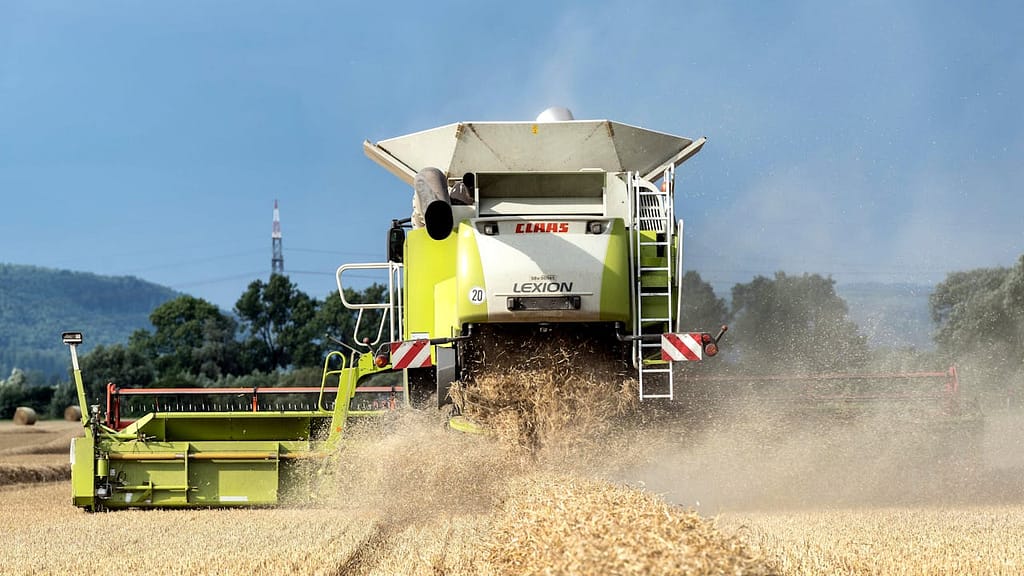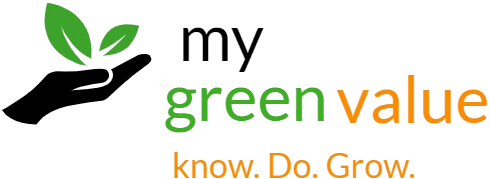Agribusiness, the backbone of global food security and economic stability, is undergoing a profound transformation thanks to rapid technological advancements. As the world grapples with the challenges of climate change, population growth, and dwindling arable land, technology emerges as both a catalyst and a solution to modern agricultural problems. From Artificial Intelligence (AI) to the Internet of Things (IoT), drones, and precision farming, innovative tools and systems are reshaping the way food is produced, processed, and delivered.
This comprehensive article explores how technology is revolutionizing agribusiness, providing in-depth insights into how AI, IoT, drones, and precision agriculture are creating smarter, more sustainable, and profitable farming systems. Whether you’re a farmer, agribusiness investor, policymaker, or tech enthusiast, understanding this evolution is key to navigating the future of food.
1. THE CURRENT LANDSCAPE OF AGRIBUSINESS
Agribusiness encompasses the entire value chain of agriculture—from input suppliers and farmers to processors, distributors, retailers, and exporters. Traditionally, agriculture has been labor intensive and heavily reliant on unpredictable environmental conditions. However, a combination of global pressures and technological readiness is shifting the tide.
Key challenges facing agribusiness:
- Climate change: Unpredictable weather patterns and extreme temperatures are affecting yields.
- Labor shortages: Many rural areas face declining labor forces due to urban migration.
- Environmental degradation: Overuse of land and water resources contributes to soil depletion and biodiversity loss.
- Food security: Feeding 9+ billion people by 2050 demands innovation in food production and distribution.
In response to these challenges, agribusinesses are embracing technologies that enhance productivity, reduce environmental impact, and improve operational efficiency.
2. THE TECHNOLOGICAL REVOLUTION IN AGRIBUSINESS
Technology is no longer an optional luxury but a critical pillar for sustainable and profitable farming. The integration of digital tools and smart devices into agricultural operations is creating an era of “smart farming.”
Core technologies driving transformation:
- Artificial intelligence (AI)
- Internet of things (IoT)
- Unmanned aerial vehicles (Drones)
- Precision agriculture
- Blockchain
- Biotechnology and genetic engineering
- Robotics and automation
While each of these tools plays a vital role, this article focuses in depth on four of the most impactful: AI, IoT, drones, and precision agriculture.
3. ARTIFICIAL INTELLIGENCE (AI) IN AGRIBUSINESS
AI is at the forefront of data driven decision making in agriculture. Through machine learning, computer vision, and predictive analytics, AI enables farmers and agribusinesses to optimize every stage of the value chain.
Applications of AI in agribusiness:
a. Crop and soil monitoring
AI powered applications analyze satellite imagery and drone data to assess crop health, soil composition, and pest infestation levels. Systems like IBM’s Watson Decision Platform for Agriculture can detect problems before they become critical.
b. Yield Prediction
AI models use historical data and real time inputs to predict crop yields, allowing better planning for harvest, storage, and market distribution.
c. Smart irrigation systems
AI integrates with IoT to optimize irrigation schedules based on weather forecasts, soil moisture, and crop needs—reducing water use by up to 30%.
d. Weed and pest management
Machine learning algorithms identify and treat weeds or pests in specific locations using targeted applications of herbicides or pesticides, minimizing chemical use.
e. Market forecasting and price modeling
AI tools analyze market trends, consumer behavior, and supply demand dynamics to help farmers decide what crops to grow and when to sell.
Benefits of AI in Agribusiness:
- Improved efficiency and productivity
- Reduction in resource waste
- Timely decision making
- Increased profitability

Internet of things in Agriculture
4. INTERNET OF THINGS (IoT) IN MODERN AGRICULTURE
IoT involves the use of connected sensors, devices, and systems that collect and exchange data to automate and optimize farm operations. This “smart farm” ecosystem enables real time monitoring and control of agricultural processes.
Key IoT Applications in Agribusiness:
a. Smart Sensors
Deployed in soil, weather stations, or livestock, these sensors collect data on:
- Soil moisture and nutrient levels
- Temperature and humidity
- Crop health
- Animal activity and vitals
b. Automated irrigation systems
IoT enabled irrigation systems use sensor feedback to water crops only when needed, saving water and energy.
c. Livestock monitoring
Smart collars and wearable sensors track the health, behavior, and location of livestock, helping to detect disease early and improve breeding management.
d. Cold chain management
IoT devices monitor temperature and humidity during food transportation and storage, ensuring food safety and reducing waste.
IoT benefits in agribusiness:
- Realtime monitoring and remote management
- Data driven insights for better decision making
- Efficient resource usage
- Improved traceability and compliance
5. DRONES: EYES IN THE SKY FOR FARMERS
Drones, or Unmanned Aerial Vehicles (UAVs), are revolutionizing agricultural surveillance and field mapping. Equipped with high resolution cameras and sensors, drones provide detailed aerial views of farmland, enabling proactive management.
Uses of drones in agriculture:
a. Field mapping and surveying
Drones quickly map large fields, identifying variations in soil type, topography, and crop performance.
b. Crop health assessment
Multispectral imaging detects plant stress, nutrient deficiencies, or disease symptoms invisible to the naked eye.
c. Spraying and seeding
Drones can spray pesticides, herbicides, or fertilizers with precision. Some are also capable of seeding over difficult terrain.
d. Livestock tracking
In large pastures, drones help locate animals and monitor their wellbeing from a distance.
Advantages of using drones:
- Reduced labor and time costs
- Timely identification of problems
- Greater accuracy in field operations
- Safe operation in hazardous or hard to reach areas

Precision farming
6. PRECISION FARMING: SMARTER AGRICULTURE FOR THE FUTURE
Precision agriculture uses technology and data analytics to manage field variability and optimize inputs like water, fertilizers, and pesticides. It’s about “doing the right thing, in the right place, at the right time.”
Technologies Powering Precision Farming:
- GPS guided tractors and machinery
- Variable Rate Technology (VRT)
- Geographic Information Systems (GIS)
- Soil sampling and mapping tools
- AI and IoT integration
Precision agriculture techniques:
a. Variable rate application
Applies inputs such as seeds, fertilizer, and chemicals at variable rates across a field, based on soil and crop needs.
b. Site specific crop management
Tailored practices like irrigation and pest control to the unique conditions of different field zones.
c. Yield monitoring and mapping
Harvesting equipment collects real time yield data, enabling spatial analysis of performance and future planning.
Precision Agriculture Benefits:
- Higher yields and lower input costs
- Reduced environmental impact
- Better crop quality
- Enhanced farm profitability
7. THE IMPACT OF TECHNOLOGICAL ADVANCEMENTS
Economic Impact
- Increased Return on investment (ROI): Farmers using precision agriculture report yield increases of 1015%.
- Reduced costs: Input use can be cut by up to 20% with tech driven approaches.
- Access to new markets: Technology enables certification, traceability, and standards compliance.
Environmental Impact
- Sustainable water and chemical use: Less runoff and groundwater contamination.
- Reduced carbon emissions: Smart logistics and machinery lower fossil fuel use.
- Soil health preservation: Targeted input use preserves topsoil.
Social Impact
- Youth engagement: Tech appeals to younger generations, helping to modernize the labor force.
- Improved livelihoods: better returns improve farmer income and food security.
- Knowledge democratization: Mobile apps and platforms bring expertise to remote farmers.
8. CHALLENGES IN ADOPTING AGRICULTURAL TECHNOLOGY
Despite the clear benefits, the adoption of technology in agribusiness is not without barriers:
a. High initial investment
Advanced tools and infrastructure, especially for AI, drones, and IoT systems, require significant capital.
b. Digital literacy gaps
In many rural areas, farmers may lack the skills to use or interpret technological tools effectively.
c. Connectivity issues
Reliable internet access is essential for many smart farming applications but remains limited in some regions.
d. Data privacy concerns
Farm data must be protected from misuse or unauthorized access, especially when dealing with large platforms or multinational tech firms.
e. Regulatory uncertainty
Drone use, data collection, and biotechnology are subject to changing laws and complex regulations
9. THE FUTURE OF AGRIBUSINESS: A TECHPOWERED VISION
The future of agribusiness lies in further integration of technology into every aspect of the agricultural value chain.
a. Full farm automation
Expect greater adoption of autonomous machinery—tractors, harvesters, and planters—that work 24/7 with minimal human intervention.
b. AI Driven decision support systems
With AI, farms will not just collect data but receive actionable insights and strategic advice in real time.
c. Blockchain for traceability
Blockchain will ensure transparency in food origin, handling, and transactions—building consumer trust.
d. Vertical and urban farming
Technology enables farming in urban settings using hydroponics and controlled environments—solving space and proximity issues.
e. Climate smart agriculture
Tech solutions will help farmers adapt to and mitigate the effects of climate change through smarter input management and real time risk analysis.
Conclusion
Technology is not merely transforming agribusiness—it is redefining it. AI, IoT, drones, and precision farming are turning conventional agriculture into a data driven, intelligent, and sustainable industry. These technologies empower farmers to produce more with less, conserve natural resources, reduce waste, and feed a growing global population.
The path forward involves overcoming adoption barriers through inclusive innovation, supportive policy, and farmer education. As digital transformation continues to unfold, agribusiness stakeholders must collaborate to build a resilient, efficient, and equitable agricultural future.
Ultimately, those who embrace this revolution will not only cultivate crops but also cultivate success—harvesting the boundless possibilities that modern technology brings to the field.

